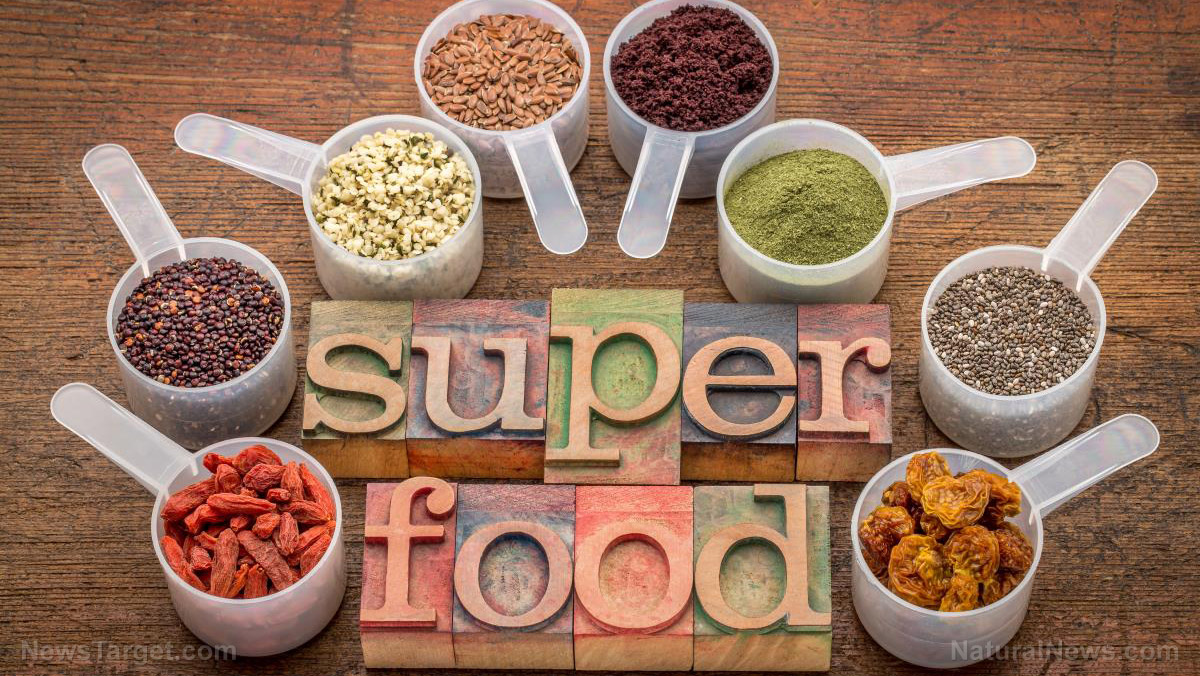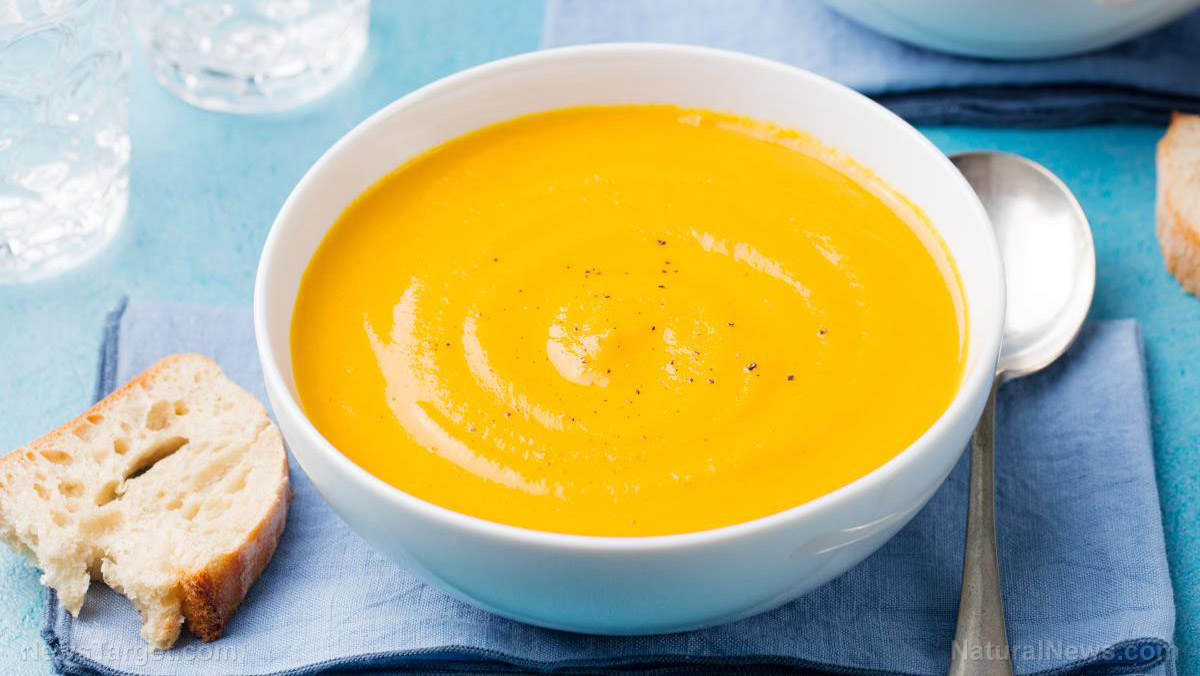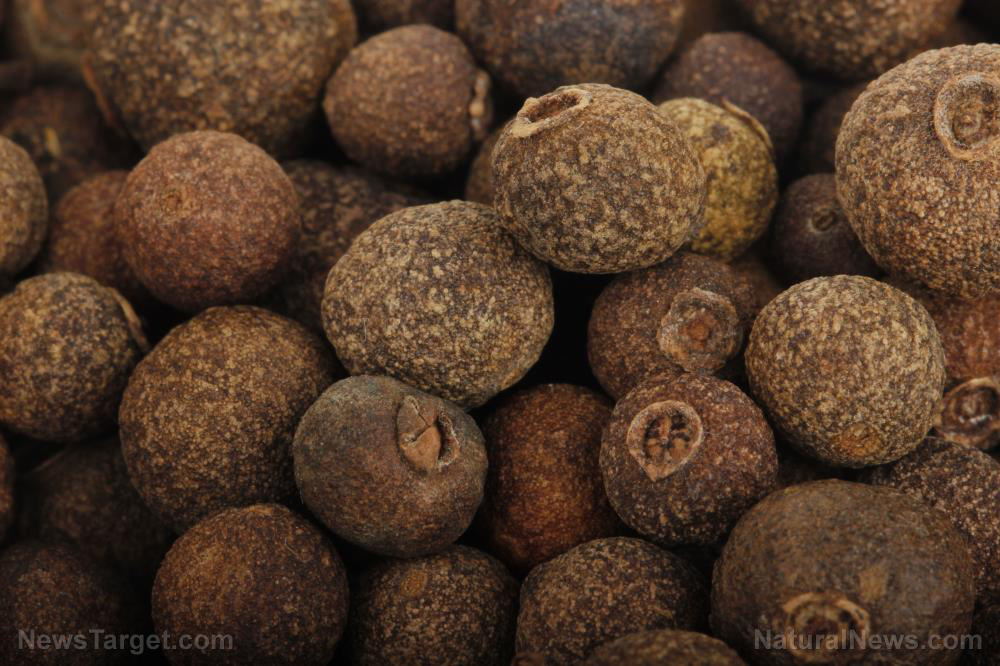Healthy reasons to eat sweet potatoes
11/28/2023 / By Zoey Sky

Sweet potatoes are nutrient-rich, with a sweet yet earthy flavor profile. This superfood is a great source of nutrients like dietary fiber and vitamins A and C.
One large sweet potato (180 grams (g)) provides 162 calories, 3.6 g of protein, 37 g of carbohydrates and 0.2 g of fat. It also contains the following nutrients:
- Fiber: 3.9 g
- Protein: 3.6g
- Sodium: 71 mg
- Vitamin A: 1730 mcg
- Vitamin C: 35.3mg
- Potassium: 855mg
Sweet potato health benefits
Sweet potatoes are filling and provide plenty of health benefits. Here are some of the benefits of adding sweet potatoes to your diet:
Supports heart health
The anthocyanins in sweet potatoes have anti-inflammatory properties that can help reduce heart disease risk. Studies show that purple sweet potato extract can suppress the activities of certain pro-inflammatory cytokines.
Meanwhile, the fiber in sweet potatoes has been shown to lower blood cholesterol levels. Their high potassium content can also help keep blood pressure normal.
Several studies have found that consuming flavonoids from foods like purple sweet potatoes can reduce the risk of heart disease. The alkaloids, anthraquinones, cardiac glycosides, flavonoids and tannins in sweet potatoes can also minimize serum creatinine and lactate-dehydrogenase activity, which is beneficial for your heart.
Supports eye health
Sweet potatoes are a great source of beta-carotene, which is essential for eye health.
One cup of sweet potatoes provides 11.3 mg of beta-carotene. Beta-carotene can protect against age-related macular degeneration (AMD), especially when combined with vitamin C, copper and zinc.
The anthocyanins in sweet and pigmented potatoes have also been shown to support eye health. Sweet potatoes with orange flesh contain more carotenoids, like the antioxidant lutein, than other types of potato.
Lutein is concentrated in the macula of your eye’s retina and is associated with healthy vision. Research suggests that lutein-rich foods like sweet potatoes can help treat diet-related diseases and eye conditions.
Helps with diabetes management
According to the American Diabetes Association, sweet potatoes are low-glycemic index (low GI) foods that are ideal for diabetes management. Replacing regular potatoes with sweet potatoes not only does wonders for your blood sugar control, but it also helps boost your intake of potassium, vitamins A and C and dietary fiber.
Sweet potatoes also contain phenolic compounds and flavonoids that can protect against diabetes. Flavonoids promote glucose absorption in peripheral tissue and enhance insulin secretion, both of which can help you maintain healthy blood sugar levels and manage diabetes. (Related: Support brain health with lutein, a brain-boosting carotenoid.)
Tips for storing and cooking sweet potatoes
There are two main varieties of sweet potatoes: dry flesh and moist flesh.
Dry flesh sweet potatoes have tan-colored skin, light-colored flesh and a higher starch content. Moist-flesh sweet potatoes have darker skin and a richer orange interior. They taste sweeter and are more commonly available in the supermarket.
Note that while the term “yams” is commonly used interchangeably with sweet potatoes, true yams come from an entirely different plant.
When buying sweet potatoes, look for fresh sweet potatoes that are heavy for their size, hard, smooth and free of bruises. Avoid sweet potatoes with shriveled skin, dark spots or indentations because these are common signs of decay. You’ll find sweet potatoes in most grocery stores at any time of the year.
Don’t refrigerate sweet potatoes. Instead, keep them in a cool, dry and dark place. The ideal storage temperature for fresh sweet potatoes is around 55 F and they will keep for at least a month or longer. Make sure you use sweet potatoes that are stored at warmer temperatures within a week to prevent spoilage.
Before prepping sweet potatoes, scrub their skin with a vegetable brush under running water and dry them with a paper towel. Cut or cooked sweet potatoes should be stored in an airtight container in the refrigerator and used within five days.
Sweet potatoes are versatile and can be baked, boiled, roasted, grilled, fried, whipped or pureed. They can serve as a side dish or be used to make salads, breads, pies or chilis. If you prefer a spicy dish, add chili powder. For a slightly sweet option, add cinnamon and nutmeg.
When mashing or whipping sweet potatoes, skip the heavy cream and add rosemary and Parmesan for a savory flair with less fat and calories. Sweet potatoes can also be used to make lasagna, casserole, sweet potato hash or sweet potato gnocchi.
Sweet potatoes are great for breakfast, lunch or dinner because they’re nutritious and inexpensive ingredients.
Watch the video below to learn how to make a sweet potato pie.
This video is from the Living The Life With Tracy channel on Brighteon.com.
More related stories:
9 Science-backed health and nutrition benefits of eating sweet potatoes.
Study: Bitter melon shows promising results in fighting 6 CANCERS commonly found in women.
Drinking coffee can help reduce your risk of depression, according to studies.
Sources include:
Submit a correction >>
Tagged Under:
This article may contain statements that reflect the opinion of the author
RECENT NEWS & ARTICLES
COPYRIGHT © 2017 SUPERFOODS NEWS

















